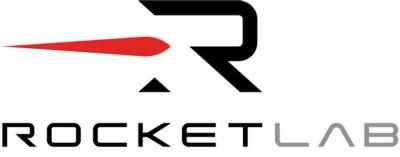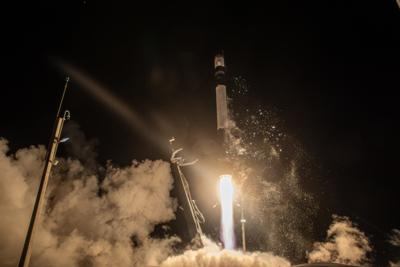Tue, Feb 20, 2024
New Mission Is Designed to Investigate Removing Space Junk from Orbit
Rocket Lab USA recently launched its 44th Electron rocket, successfully deploying an orbital debris inspection satellite for Astroscale Japan Inc.

The mission, named “On Closer Inspection”, launched from Pad B at Rocket Lab’s Launch Complex 1 in New Zealand at 03:52 NZDT February 19th, 2024 (14:52 UTC, February 18th). Electron deployed the Active Debris Removal by Astroscale-Japan (ADRAS-J), a satellite designed to test technologies and operations for approaching and monitoring debris objects in orbit, also known as space junk. The mission is the first phase in assessing the potential for satellites to rendezvous with orbital debris objects in future and assist in de-orbiting them, supporting space sustainability for future generations.
Following the successful launch on Electron, the 150-kilogram ADRAS-J satellite will now approach an aged, derelict rocket stage in orbit to observe it closely, understand how it behaves and determine potential methods for its assisted deorbiting in future. The rocket stage it will be observing is the Japanese H-2A upper stage left in low Earth orbit after the launch of the GOSAT Earth observation satellite in 2009. ADRAS-J will fly around the stage, 11 meters long and four meters in diameter, inspecting it with cameras and sensors. Astroscale’s full mission will take between three and six months to complete.

To enable the ADRAS-J satellite to rendezvous with the derelict H-2A upper stage in orbit, Rocket Lab had to design a mission with strict launch timing and precision orbital deployment parameters. Rocket Lab only received the final perigee, apogee, and inclination from Astroscale 20 days before launch, parameters that are typically determined many months in advance of a launch. Only then could argument of perigee targets for different days within the launch window be selected, essentially determining the timing of Electron Kick Stage burns to facilitate the unique elliptical orbit required depending on the launch date. The mission demanded highly accurate orbital insertion with tighter margins than required on most standard missions. The exact T-0 was only able to be defined the day prior to launch and the required LTAN accuracy only allows for +/- 15 seconds, demonstrating Rocket Lab’s capability to deliver rapid and responsive advanced guidance, navigation and control analysis.
‘On Closer Inspection’ was Rocket Lab’s second launch of 2024 and the Company’s 44th Electron launch overall.
More News
Aero Linx: International Federation of Airworthiness (IFA) We aim to be the most internationally respected independent authority on the subject of Airworthiness. IFA uniquely combi>[...]
Ultrahigh Frequency (UHF) The frequency band between 300 and 3,000 MHz. The bank of radio frequencies used for military air/ground voice communications. In some instances this may >[...]
A Few Questions AND Answers To Help You Get MORE Out of ANN! 1) I forgot my password. How do I find it? 1) Easy... click here and give us your e-mail address--we'll send it to you >[...]
From 2019 (YouTube Edition): Learning To Paint Without Getting Any On Your Hands PPG's Aerospace Coatings Academy is a tool designed to teach everything one needs to know about all>[...]
Also: Sustainable Aircraft Test Put Aside, More Falcon 9 Ops, Wyoming ANG Rescue, Oreo Cookie Into Orbit Joby Aviation has reason to celebrate, recently completing its first full t>[...]
 ANN's Daily Aero-Linx (05.06.25)
ANN's Daily Aero-Linx (05.06.25) ANN's Daily Aero-Term (05.06.25): Ultrahigh Frequency (UHF)
ANN's Daily Aero-Term (05.06.25): Ultrahigh Frequency (UHF) ANN FAQ: Q&A 101
ANN FAQ: Q&A 101 Classic Aero-TV: Virtual Reality Painting--PPG Leverages Technology for Training
Classic Aero-TV: Virtual Reality Painting--PPG Leverages Technology for Training Airborne 05.02.25: Joby Crewed Milestone, Diamond Club, Canadian Pilot Insurance
Airborne 05.02.25: Joby Crewed Milestone, Diamond Club, Canadian Pilot Insurance




